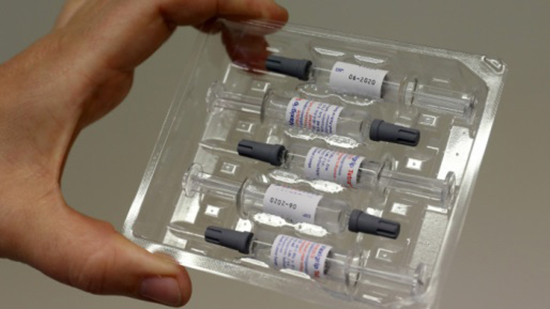开发通用型流感疫苗,创新科技与金融投资缺一不可

|
假期,流感再次悄然来袭。截至2019年12月11日,美国已经有6名儿童因为流感而死亡,而正如美国疾病控制与预防中心指出的那样,“流感季才刚刚开始。”在流感蔓延形势好转之前,情况只会更糟:2018年,共有143名儿童死于流感。 在流感病毒肆虐的同时,有关部门开始再次强调疫苗的重要性,而人们对疫苗的不满情绪也日益凸显。不是说疫苗不好,而是还不够好。 “善变”的流感病毒,每隔一段时间就会发生变异,因此每年都需要对疫苗配方进行调整。1918年的流感大流行在全球范围内造成约5000万人死亡,虽然这只是个案,但突变毒株引发新一轮的流感大流行的可能性仍然存在。 人们经常将流感与许多不太严重、症状类似的感染(“感冒”)混为一谈,对其威胁也不以为意。但毫无疑问流感非常致命,仅在2017至2018年的流感季节,美国就有约61000人死于流感,比当年死于过量使用阿片类药物的人数还多。 白宫经济顾问委员会的最新报告显示,流感每年会给美国造成高达3610亿美元的经济损失,包括医疗费用、误工损失和生命损失。而流感疫苗缓慢的生产速度以及10%至60%不等的整体有效率则使问题雪上加霜。在流感大流行期间,现有技术下的疫苗生产速度赶不上病毒传播速度,导致损失大幅增加。以2009至2010年的流感大流行为例,按照白宫经济顾问委员会的估计,如果能够提升疫苗生产速度,同时将疫苗有效率提升30%,那么仅通过接种疫苗就能增加约9530亿美元的经济效益。 在近期的年度报告中,全球备灾监测委员会的评估结果令人忧虑。该报告直截了当地指出,各国政府“遇到流感爆发就不遗余力控制疫情,疫情稍退就又会放松警惕”,如此“好了伤疤忘了疼”的做法已经形成了“恐慌与忽视的恶性循环”。 要更好地应对流感威胁,我们需要新的、持续的金融和技术投资。而其中首要任务就是对现有流感疫苗生产进行现代化改造,以便迅速实现靶向疫苗的规模化生产,应对未来新出现的流感毒株。萨宾-阿斯彭疫苗科学与政策小组在其近期发布的报告中指出,现有疫苗生产仍然主要基于20世纪40年代的技术。但人命关天,如果等到威胁出现才开始行动,后果将不堪设想。 而要消除流感的威胁,我们就必须开发出能够长效对抗未来各种流感毒株的通用型疫苗。 流感防控的紧迫性和重要性要求我们尽快采取相应措施,综合使用科学、技术和金融手段,集中力量推动通用型流感疫苗的开发工作。 一方面,美国国立变态反应和传染病研究所正在开展多项研究,解决诸多基础科学层面面临的挑战,包括全面了解人体免疫系统预防流感的机制及其评估办法等。另一方面,私营部门和公共部门的投入对突破疫苗研发瓶颈也有着至关重要的作用。盖茨基金会和流感实验室也推出了“通用流感疫苗开发大挑战”项目,呼吁科学界寻找新的疫苗开发策略。 大胆设想并果断行动已经刻不容缓。如果现在就进行必要投资,那么未来就能大幅降低流感造成的高昂损失。(财富中文网) 哈维·V·费恩伯格博士、雪莉·M·蒂尔格曼博士是萨宾·阿斯彭疫苗科学与政策小组的联合主席。 译者:梁宇 审校:夏林 |
An unwelcome visitor during the holiday season has returned: influenza. As of December 11, 2019, six children have already fallen victim to the disease. And, as the Centers for Disease Control and Prevention (CDC) points out, “the flu season is just getting started.” It will only get worse before it gets better: Last year’s pediatric death total was 143. With the spread of the virus comes the annual message stressing the importance of vaccination. Yet at the same time comes disappointment with the performance of current vaccines. They are good—but just aren’t good enough. Influenza is a fickle virus. It regularly mutates, requiring adjustments to the vaccine’s formula every year. While only rarely do these unpredictable mutations turn the virus into an international killer on the scale of the 1918 influenza pandemic—which killed around 50 million people globally—the possibility of such a variant strain that could trigger a global pandemic looms each year. The confusion of influenza with the many less serious, similarly symptomatic, infections that are commonly labeled “the flu” often contributes to complacency about the threat influenza poses. Make no mistake, influenza is a killer: In the U.S., the 2017 to 2018 season took an estimated 61,000 lives—more than the deaths from opioid overdoses that year. Influenza extracts a heavy economic toll, costing the U.S. $361 billion each year, including health care costs, work missed, and lives lost, according to a recent report by the White House Council of Economic Advisors (CEA). Exacerbating this is the slow pace of manufacturing annual influenza vaccines combined with effectiveness rates that range from 10% to 60%. And these costs would increase considerably during a pandemic where the spread of the disease outpaces existing vaccine production technology. In the 2009 to 2010 pandemic, for instance, the CEA report estimates that combining an increased speed of production with a 30% improvement in vaccine effectiveness would have added around $953 billion in increased economic benefit from vaccination. In its recent annual report, the Global Preparedness Monitoring Board (GPMB) gave a candid and urgent assessment, noting that governments have established “a cycle of panic and neglect when it comes to pandemics,” where there is a “ramp[ing] up efforts when there is a serious threat,” which is forgotten “when the threat subsides.” To face down these threats, new, sustained investments—both financial and technical—are required. Modernizing the influenza vaccine manufacturing industry—and rapidly scaling up production of tailor-made vaccines to protect against newly-emergent influenza strains—is an important start. Current vaccine manufacturing remains largely based on 1940s technology, as our recent report from the Sabin-Aspen Vaccine Science & Policy Group highlights. But the stakes are too high to be satisfied with a response that begins only after a threat surfaces. Eliminating the threat requires a universal influenza vaccine that provides effective, long-lasting protection against any future influenza virus strain. The urgency and magnitude of the threat calls for an equally matched response—one that combines scientific, technical, and financial assets focused on the single-mission of developing a universal influenza vaccine. In addition to current efforts by the National Institute of Allergy and Infectious Diseases (NIAID) to tackle the many foundational scientific challenges—such as a full understanding of how the human immune system protects against influenza and how to measure that protection—new private and public sector investments are essential to propel vaccine discovery beyond the current limitations. Efforts like the Gates Foundation and Flu Lab’s “Universal Influenza Vaccine Development Grand Challenge” call on the scientific community to find new, innovative strategies for vaccine development. It is time for a bold vision and even bolder action. If the necessary investments are made now, the high costs that influenza will exact on the future would be radically diminished. Dr. Harvey V. Fineberg and Dr. Shirley M. Tilghman are co-chairs of the Sabin-Aspen Vaccine Science & Policy Group. |













